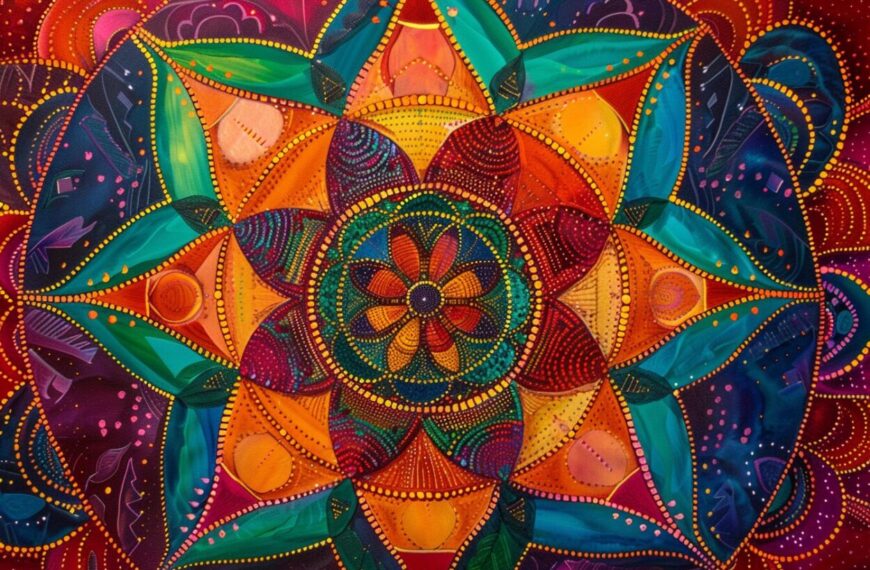Lotus Symbolism Across Cultures and Beliefs
The lotus flower is often depicted as a symbol of purity and enlightenment. Across various cultures and mythologies, the lotus embodies a wide spectrum of traits, representing both spiritual awakening and resilience. Lotus symbolism includes qualities such as beauty, rebirth, and transcendence, while also embodying the journey from darkness to light and the interconnectedness of existence.
Let’s explore the lotus symbolism in detail!
- 1. Purity
- 3. Renewal
- 4. Transcendence
- 5. Transformation
- 6. Divine Birth
- 7. Chakras
- 8. Emptiness
- 9. Compassion
- Lotus Symbolism in Buddhism
- Lotus Symbolism in Hinduism
- Lotus Symbolism in Egyptian Culture
- Lotus Symbolism in Chinese Culture
- Lotus Symbolism in Japanese Culture
- How To Use The Lotus Symbolism In Your Home Decor
- Related Posts
1. Purity

Although born in the muddy swamp, the lotus flower remains untainted and has the ability to transform its surroundings, as wherever the lotus grows, it purifies the murky water.
The lotus possesses both fragrance and beauty, but its scent is not overwhelming; it is gentle, evoking a noble spirit. Its beauty is modest and graceful, with petals that are white tinged with pink and a yellow center. From the time it blooms until it withers, it is never approached by bees or butterflies. After overcoming many obstacles to reach the open space of emptiness, the lotus continues to rise under the Sun’s light, blossoming and showcasing its beauty and fragrance, filling the space around it.
Read More: Symbols of Innocence Around The World
2. Enlightenment

The formation of the lotus follows the law of cause and effect in the cycle of rebirth. The lotus has buds, flowers, and seeds. The blooming flower symbolizes the past, the seed pod represents the present, and the seeds signify the future, illustrating a continuous cycle. The lotus has become a symbol in Eastern Buddhist art. It represents mystical and enchanting beauty and profound thoughts.
As this beautiful flower blooms in a swamp, it also symbolizes the potential for any individual to achieve enlightenment, regardless of their starting point. The lotus rises from the darkness of the mud, drawing parallels to Buddha, who abandoned his princely life after witnessing aging and death to seek enlightenment.
3. Renewal
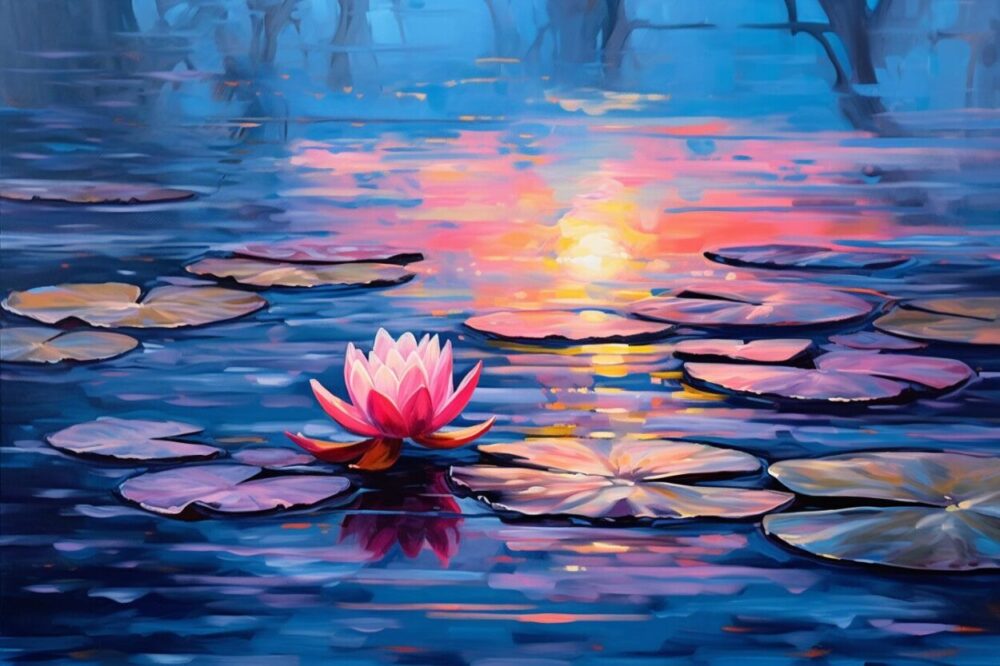
Rewal symbolizes a fresh start following a period of decline. This concept is deeply rooted in the cycle of life and death, intricately woven into existence. This symbolism resonates with the lotus, providing a profound meaning.
The lotus flower symbolizes renewal. As dawn breaks, the lotus blossoms open, showcasing life and vibrancy. However, as dusk approaches, the blooms close and submerge underwater, only to bloom again the next day, demonstrating a consistent cycle of rebirth.
4. Transcendence
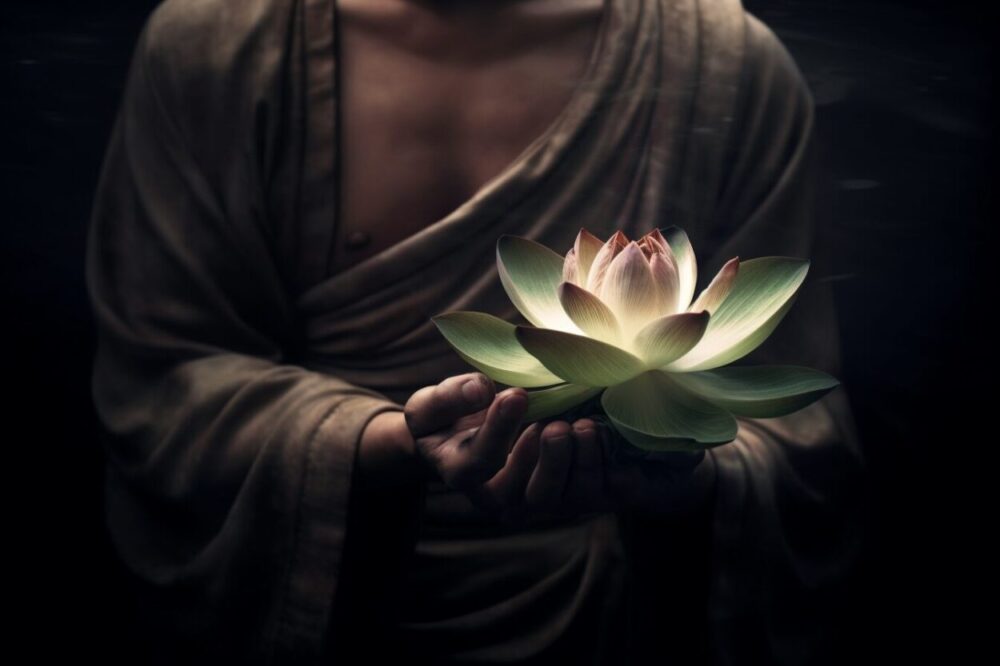
Transcendence refers to the spiritual progression towards a higher plane of existence, beyond the ordinary and physical. It signifies liberation from worldly constraints.
In the realm of spirituality, the progression of the flower from the depths to the surface is seen as an allegory for the soul’s ascension towards higher planes of existence. Similar to the lotus breaking free from the murky waters to bask in sunlight, the soul is perceived to rise from the material plane towards a sphere of spiritual enlightenment. This journey is transcendence, a significant elevation beyond the ordinary, the material, and the mundane, to reach a heightened state of awareness and divine realization.
The lotus is the most beautiful flower, whose petals open one by one. But it will only grow in the mud. In order to grow and gain wisdom, first you must have the mud — the obstacles of life and its suffering. The mud speaks of the common ground that humans share, no matter what our stations in life. Whether we have it all or we have nothing, we are all faced with the same obstacles: sadness, loss, illness, dying and death. If we are to strive as human beings to gain more wisdom, more kindness and more compassion, we must have the intention to grow as a lotus and open each petal one by one.
Read More: Symbols of Resilience in Cultures and Arts Around The World
5. Transformation
From a tiny seed buried in mud, the lotus transforms into a beautiful, pristine flower. This is symbolic of our own spiritual transformation, from ignorance to wisdom, from materialistic desires to spiritual fulfillment, similar to a phoenix rising from the ashes.

6. Divine Birth
The lotus, much like a child opening its eyes to the world for the first time, reveals its petals under the warm touch of the sun. This gentle bloom is a powerful emblem of divine birth, a silent proclamation of the resilience and beauty of life.
In Hindu belief, the birth of the god Brahma is intimately associated with the lotus. It is said that he was born from a lotus that grew from the navel of Lord Vishnu, a manifestation of the divine essence of creation. Buddhism too holds the lotus with high importance. The birth of Buddha is often depicted with lotus symbols, representing his divine birth and enlightenment. They believe that when Buddha took his first seven steps, lotus flowers sprung from the ground beneath him.
7. Chakras

Within the context of meditation and chakras, the lotus emerges as a profound symbol of spiritual energy centers. Rooted in ancient Hindu and Buddhist traditions, the term ‘chakra’ refers to a spinning wheel or circle of energy within the human body. Each of the seven chakras is visually represented by a lotus flower, varying in color and number of petals, indicating the energy state and consciousness level of each chakra.
The crown chakra, for instance, is represented by a thousand-petaled lotus, often depicted in vivid violet or white. It is seen as the seat of divine consciousness, signifying enlightenment and transcendence. Conversely, the base or root chakra is symbolized by a four-petaled lotus, grounding us in our physical existence.
8. Emptiness
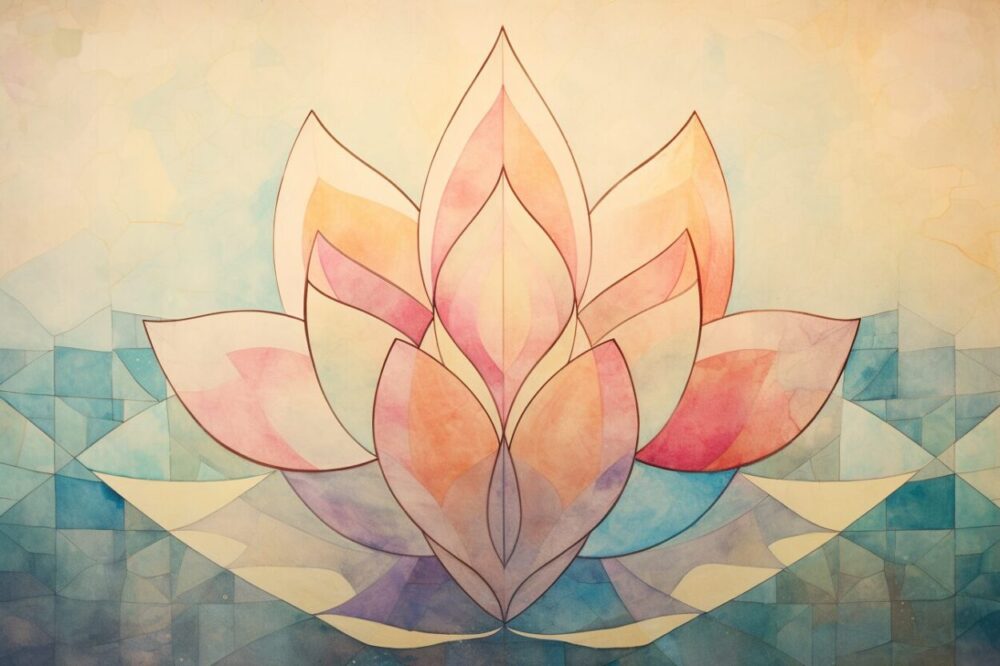
In Buddhism, the concept of ‘sunyata’, often translated as ’emptiness’ or ‘voidness’, is a profound philosophical notion that strikes at the very heart of existence. The lotus, in its ineffable symbolism, encapsulates this concept beautifully.
The doctrine of sunyata suggests that all phenomena are empty of independent, inherent existence. It is akin to suggesting that all things are interconnected, that they arise and pass away in response to a complex network of causes and conditions. Nothing exists in isolation; nothing exists in and of itself, without relations to other things. This is not a declaration of nihilism, rather, it is an assertion of interdependence and relativity.
“Form is emptiness, emptiness is form. Emptiness is not separate from form, form is not separate from emptiness. Whatever is form is emptiness, whatever is emptiness is form.” – Prajnaparamita Heart Sutra
So, where does the lotus fit into this? The lotus, beautiful and pure as it is, owes its existence to the murky mud, the pond’s water, the air, and the sun. Similarly, us beings are not independent entities, but rather, we are the culmination of countless interconnected factors and influences.
- Lotus: A symbol of purity and enlightenment, transcending its muddy origins.
- Mud: The necessary condition for the lotus to grow, representing our earthly, imperfect conditions.
- Water: The medium in which the lotus blooms, symbolizing the flow of life and experiences.
- Air: Essential for the lotus’s growth, symbolizing the spiritual breath or life force.
- Sun: The nourishing energy, symbolizing enlightenment and wisdom.
Just as the lotus cannot exist without these elements, we cannot exist without the multitude of conditions that shape us. Therefore, the lotus serves as a profound symbol of the concept of sunyata, a reminder of our inherent interconnectedness and interdependence.
9. Compassion
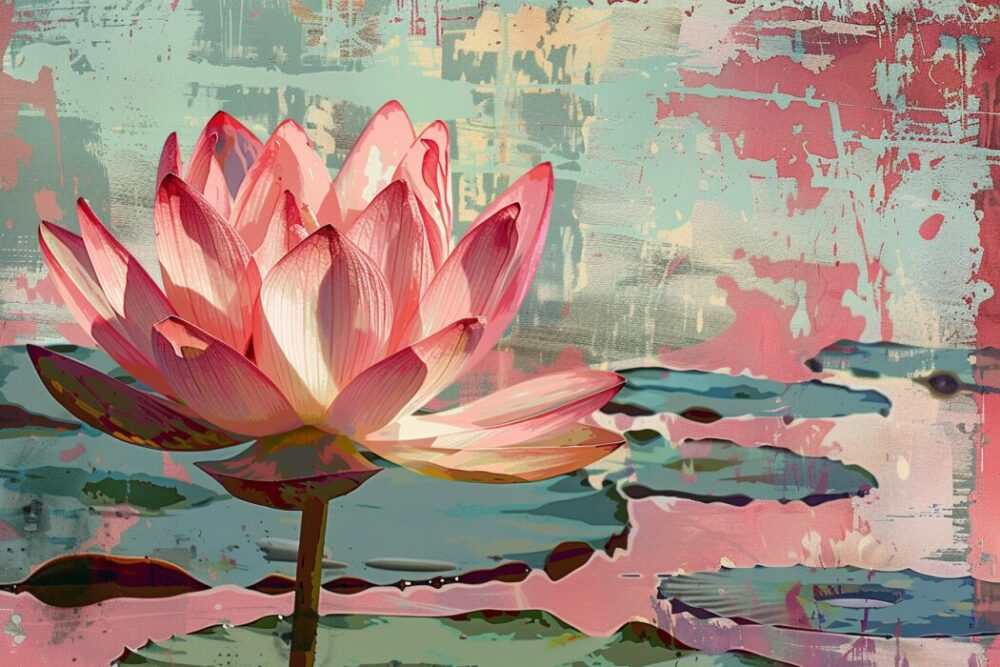
The term compassion is a deep awareness of another’s suffering coupled with the desire to alleviate it. Achieving compassion is not an overnight task, but rather a journey of self-evolution. It requires introspection, empathy, and a genuine desire to understand another’s suffering.
The pink color of the lotus is often associated with these noble sentiments of love and compassion. Despite originating from a place of hardship and suffering, we can all rise above to radiate love and empathy, just like the lotus. It is important to acknowledge that we might not all have the same starting place, but it is the journey we take and the experiences we have that truly count. “Be kind. Be compassionate with each other”.
Lotus Symbolism in Buddhism

The lotus is deeply woven into the fabric of Buddhism, acting as an enduring symbol of purity and enlightenment. In scriptures, it is often seen depicted with the Buddha or Bodhisattvas, suggesting a spiritual awakening. The lotus is perceived as a metaphor for the human condition – anchored in the mud (the material world), but reaching towards the sky (enlightenment). The deeper the mud, the more beautiful the lotus blooms.
One of the most influential and revered Buddhist sutra is the Lotus Sutra. The earliest known Sanskrit title for the sūtra is the Saddharma Puṇḍarīka Sūtra, which can be translated as “The Scripture of the Lotus Blossom of the Fine Dharma” or “The Discourse on the White Lotus of the True Doctrine.” In English, the shortened form “Lotus Sūtra” is more commonly used.
The lotus flower imagery is also said to highlight the earthly connection of Buddhas and bodhisattvas. The lotus is rooted in the earthly mud yet flowers above the water in the open air, much like the bodhisattva who lives in the world but remains unstained by it.
Vishnu is frequently described as the “Lotus-Eyed One” (Pundarikaksha). The unfolding petals of the lotus suggest the expansion of the soul. Its growth from the mud of its origin to its pure beauty embodies a positive spiritual promise. In Hindu iconography, other deities, such as Ganga and Ganesha, are also often depicted with lotus flowers as their seats.
Lotus Symbolism in Hinduism

Hindus revere the lotus, with divinities such as Vishnu and Lakshmi often portrayed on a pink lotus in iconography. Historically, many deities, including Brahma, Saraswati, Lakshmi, and Kubera, are typically depicted seated on a stylized lotus throne. In the representation of Vishnu as Padmanabha (Lotus Navel), a lotus emerges from his navel with Brahma seated on it.
The goddess Saraswati is often shown on a white lotus. The lotus symbolizes what is divine or immortal in humanity and represents divine perfection. It is associated with sun and fire gods and signifies the realization of inner potential.
In Tantric and Yogic traditions, the lotus symbolizes an individual’s potential to harness the flow of energy moving through the chakras, often depicted as wheel-like lotuses, culminating in the thousand-petaled lotus of enlightenment at the top of the skull.

A popular meditation pose originated from India is the Lotus position. It is also known as Padmasana in Sanskrit. In the lotus position, each foot is placed on the opposite thigh while sitting cross-legged. It’s an old yoga pose that existed before hatha yoga and is commonly used for meditation in Hindu, Tantra, Jain, and Buddhist practices. Lotus pose helps stabilize the hips and spine, allowing for a straight spine and an open chest, which are beneficial for meditation.
Variations of this pose include easy pose (Sukhasana), half lotus, bound lotus, and psychic union pose. Some advanced yoga poses, like the yoga headstand, also incorporate the lotus or half lotus leg position. However, for those unaccustomed to sitting on the floor, this pose can be uncomfortable, and trying to force the legs into position may cause knee injuries.
Lotus Symbolism in Egyptian Culture
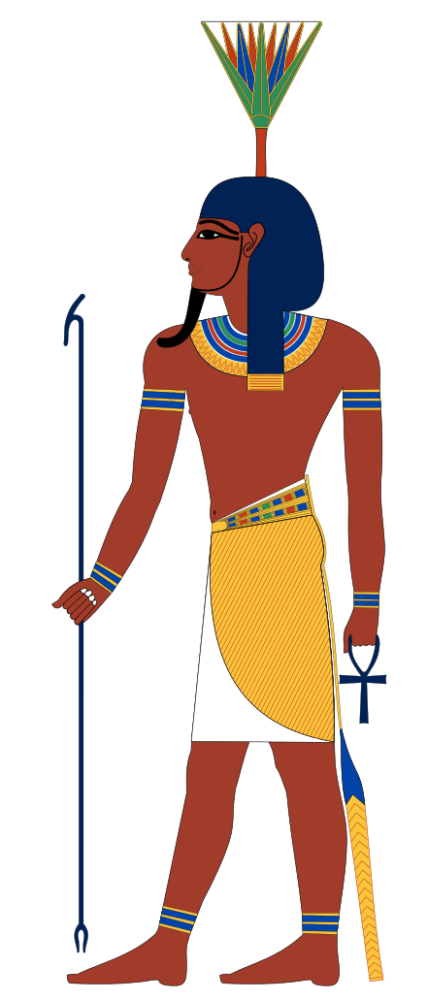
Source: Wikipedia
Nefertem, meaning “beautiful one who closes” or “one who does not close”, originated as a lotus flower in Egyptian mythology during the creation of the world, emerging from the primal waters. Nefertem symbolized the first sunlight and the delightful fragrance of the Egyptian blue lotus flower.
Nefertem or Nefertum was often depicted either as a lion-headed man or as a beautiful young man. He eventually came to be regarded as the son of the creator god Ptah, with the goddesses Sekhmet and Bast sometimes referred to as his mother. In art, Nefertem is commonly shown as a handsome young man with blue water-lily flowers adorning his head. As the son of Bastet, he is also occasionally depicted with the head of a lion or as a reclining lion or cat. Small statuettes of Nefertem were frequently carried by ancient Egyptians as symbols of good luck.

Source: Wikipedia
Another Egyptian creation myth involving the lotus is that of the Nu. In the beginning, there existed only a vast, chaotic cosmic ocean known as Nu. It is said to have risen from the waters of creation and birthed the sun god Ra in certain versions of the myth. The universe was enveloped by the immense expanse of primordial waters, and amidst this primal chaos emerged the Benben, a pyramid mound. A lotus flower was associated with the Benben, and from it, upon blooming, Ra emerged.
Ancient Egyptians believed the Nun, an oceanic abyss, encircled a bubble containing life, symbolizing their deepest cosmological mystery. According to their creation stories, the first land mound emerged from the waters of the Nun, which serves as the origin of everything in the world. In the Ennead cosmogony, Nun is seen as transcendent during creation, alongside the creator god Atum.
Lotus Symbolism in Chinese Culture

After Buddhism was introduced into China, in architecture, art, or literature, the image of lotus appeared in various forms and colors. In fact, not only in China, since ancient times, lotus has been cherished by Western ethnic groups and even regarded as a symbol of the tree of life.
In culture and literature, the lotus is a symbol of freedom and creativity, nourishing Chinese culture, and also the subject of observation in the history of Chinese Zen. The lotus in Chinese is translated as “荷花 (héhuā)”. According to Chinese beliefs, the lotus embodies profound philosophical and existential meanings. Lotus has long been known as a noble flower, growing in mud but without the foul smell of mud.
In China, Buddha statues are found at the center of caves. The ceiling of the cave is paved with tiles in the shape of lotus flowers, and stone pillars are also carved with lotus flowers, with scenes of victory and defeat of the Pure Land world painted on the four surrounding walls.
Red lotus symbolizes the female reproductive organ and women deprived of the title are often called red lotus. The lotus stem symbolizes the male reproductive organ. The green lotus stem (qing) symbolizes cleanliness and humility. Lotus symbolizes Xian-gu.
In the scriptures, lotus is often used to describe the beautiful figure of Buddha. The Buddha describes his body as a miraculous golden color, radiating light like golden mountains, pure and gentle like lotus flowers (Buddha’s body is beautifully yellow, shining like golden mountains, pure and gentle like lotus flowers). The white color of the lotus symbolizes the purity of the Buddha.
Lotus Symbolism in Japanese Culture
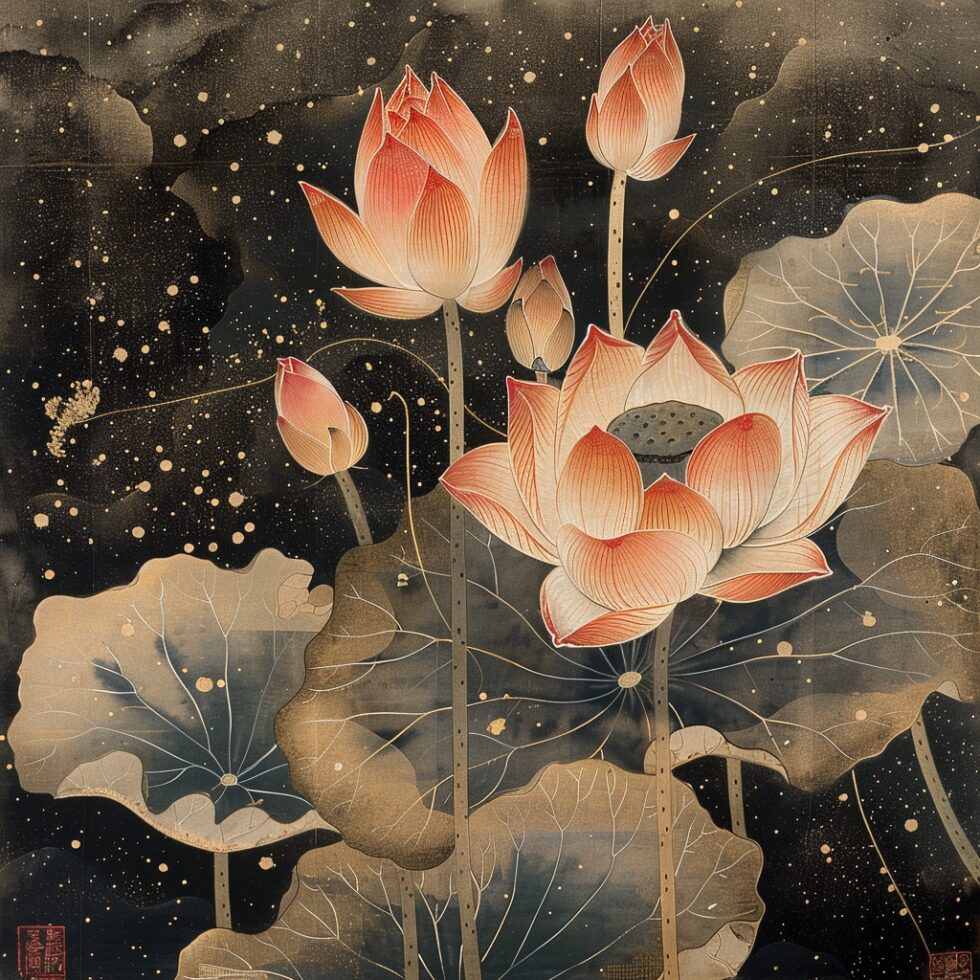
The four major ancient Japanese texts—Kojiki, Manyoshu, The Tale of Genji, and The Pillow Book—all contain descriptions of lotus flowers.
An intriguing legend is recorded in Kojiki, Japan’s oldest historical text. It tells of Emperor Ohatsuse, later known as Emperor Yuryaku, proposing marriage to a maiden named Akai Ko. From that moment, the maiden awaited the Emperor’s arrival for 80 years. She expressed her feelings to the Emperor in a song:
“In the inlet of the sunny shore, lotus flowers bloom, beautiful maiden, do you remember me, who was once as young and beautiful as a lotus flower?”
This romantic episode constitutes the oldest record of lotus flowers in Japan, equivalent to the lotus flower praised in the Book of Odes, which dates back 3,000 years in China.
In the late 7th to late 8th centuries, the oldest Japanese poetry anthology, Manyoshu, was compiled. It collected poems composed by individuals from various social strata, including the Emperor, nobles, and even commoners, and its style closely resembles that of the Chinese Book of Odes. Manyoshu was entirely written in Chinese characters, and its spirit and aspirations were all learned from China’s New Songs from the Jade Terrace. Manyoshu contains references to lotus flowers in four places. Among them, the following poem is exemplary:
“It is impossible not to love the sight of that pond. At that moment, a woman skilled in language said, ‘Today, during our outing, we saw the magnificent Kachimata pond, with its rippling waters and burning lotus flowers. It’s so beautiful it’s heartbreaking, and words fail to describe it.'”
This passage recounts how a prince, after viewing the flourishing lotus flowers at the Kachimata pond, later described his feelings about their beauty to a woman upon his return. At the time, Japanese literature was primarily influenced by Chinese literature, both in terms of linguistic structure and aesthetics.
Intellectuals of the era, familiar with the reading of the Chinese character for lotus, understood its resemblance to characters meaning “compassion,” “pity,” or “love,” and thus, the imagery of lotus flowers in literature was directly associated with concepts of “beauty,” “ideal women,” and “romantic love.” Simultaneously, by deliberately utilizing the character for “lotus” in a normative fashion (rather than the Japanese pronunciation of “hasu”), a special significance was imbued into this character.
How To Use The Lotus Symbolism In Your Home Decor
The lotus, with its heavenly bloom, is not just a stunning sight, but a lasting symbol with deep meanings in different cultures and religions. Adding this symbol to your home decor infuses your personal space with its rich symbolism. The lotus can stand for purity, enlightenment, renewal, and change, among other concepts.
The language of art expresses the symbolism of the lotus through various forms. Whether it is a tranquil painting of a lotus pond at dawn, a lively tapestry of blooming lotus flowers, or an abstract representation of the lotus’s geometric shape, each serves as a visual reminder of the lotus’s meaning: purity, transformation, and enlightenment. Having these artworks in your house can truly bring a serene “vibe” to it.



